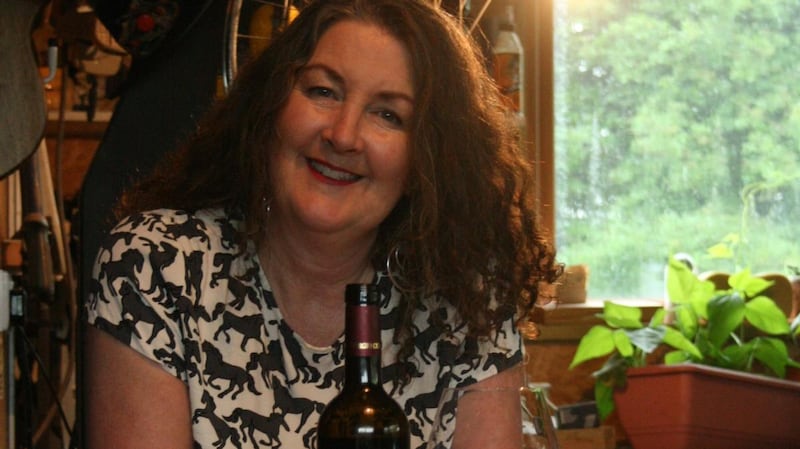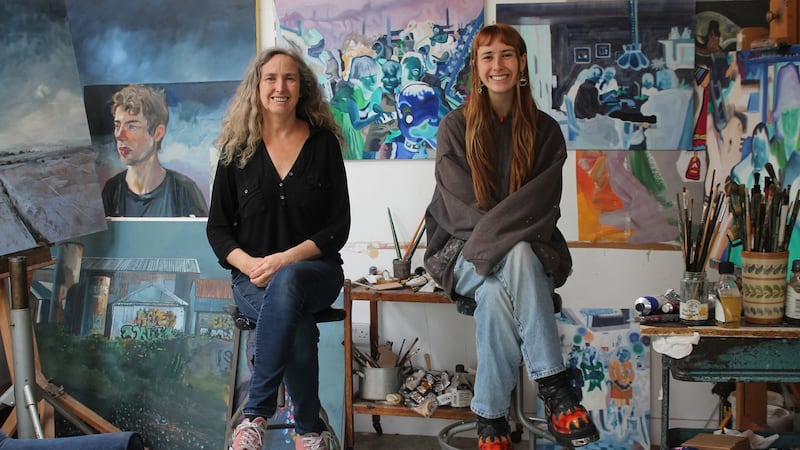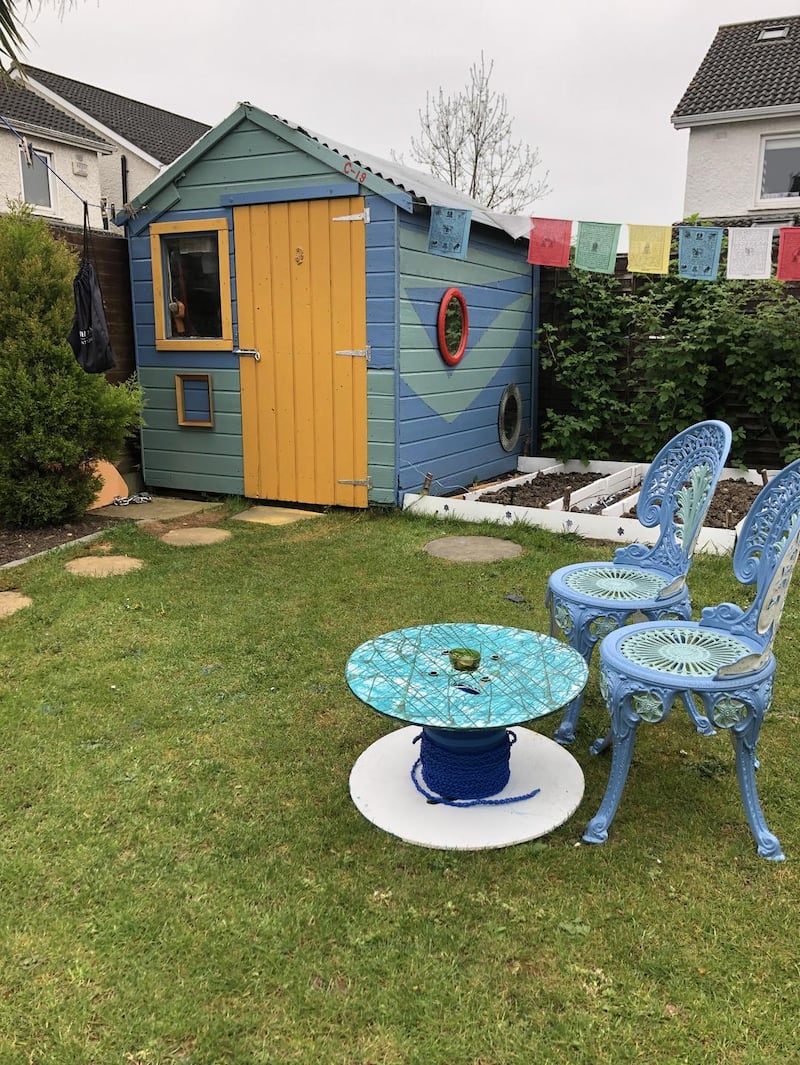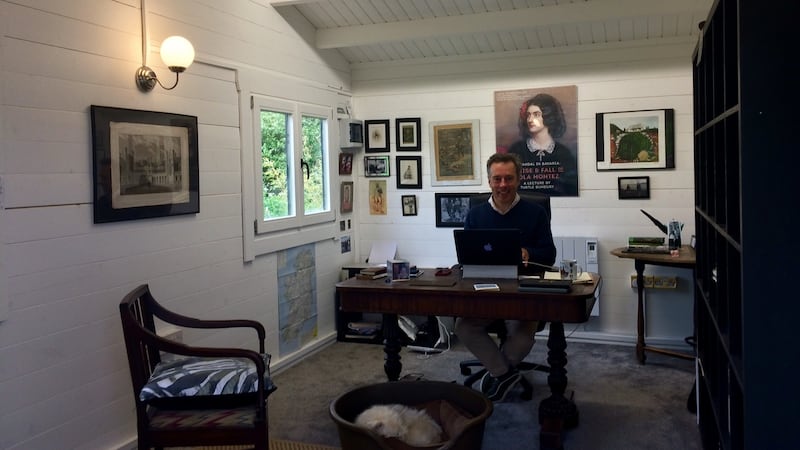FROM SHEBEEN TO STUDIO, BUSINESS HQ TO WRITER'S RETREAT, LOCKDOWN HAS UNDERLINED HOW THERE'S A SHEDLOAD OF INSPIRATION TO BE FOUND AT THE BOTTOM OF THE GARDEN
It's a place of clutter, a fertile breeding ground for fungi and festoons of cobwebs, somewhere to dump half-used cans of paint and your rusty lawnmower. Or it's a retreat, a special spot, your own private world and a world unto itself. The fact is, the humble garden shed has the potential to be pretty much anything you care to make it. As the Men's Shed movement (menssheds.ie) proves, the shed offers the ideal spot for getting away from daily life, as well as for finding and doing something new – all of which can be vital for good mental health.
Sheds can be palatial or tiny, luxurious or spartan. Sheds can be inspirational: take Derek Mahon's glorious poem, A Disused Shed in Co Wexford, finalist a few years ago in RTÉ's A Poem for Ireland, for an evocative foray into their deeper meanings.
Sheds can also be the start of something big. Companies set up in sheds include Hewlett Packard, Harley Davidson and Dyson. Back in 1943, Ingvar Kamprad used a small green shed as the home depot for his fledgling business. He named it Ikea.
Writers have known the secrets of sheds for years. Roald Dahl wrote many of his much-loved children's books, as well as his spookier adult stories in a very charming shed, built by one of his pals for just £80. Dahl had an armchair and a board for his desk, and a table for mementoes, including his own hipbone – relic of an operation – and a ball he made from chocolate bar foil. George Bernard Shaw's shed is an ingenious affair: no larger than a regular garden shed, it is built on a rotating platform, so the famous Irish playwright could turn it to track the sun. Both sheds can be visited – when we're out and about again.
Meantime, if you're looking, as Virginia Woolf said, for a room of one's own, why not follow her inspiration? Woolf also wrote from her garden shed, so – if you're lucky enough to have one – look no further than your own back yard.
The wine shed
Sheds may be scene of many crimes against home brew, but Fionnuala Harkin raises the bar with her twice-weekly shed-based online wine tastings. Harkin works with Wines Direct and, since last summer had been hosting local wine evenings from her garden shed in west Cork. The shed in question was built by Harkin's husband Tim. "He insists on it being called a workshop, but I commandeered it and renamed it the wine shed," she says.

The walls are hung with tools and saws but, as Tim also DJs at festivals, you’ll also find neon lights, illuminated palm trees and disco balls. “This all adds to the slightly surreal atmosphere of a swanky wine and antipasti soirée in, essentially, a carpenter’s shed,” says Harkin. “Some get shed envy,” she says, while others exclaim “Oh! it actually is a shed.”
Now that soirées are off the cards, for the next while at least, Harkin is using the time to delve into the differences between your sauvignons and your chardonnays, picpouls and pinots, and bringing joy to many in the process. “I got a great text from my friend Jane when she saw my @wineshedwestcork Instagram: ‘After scrolling through all these young ones doing exercises, it was such a relief to find you in a shed with a bottle of wine!’, she said.”
The artist’s shed
Una Sealy built her shed at the end of the garden 16 years ago, having worked in studios in Temple Bar and Henrietta Street over the years. "After I had children and moved out of the city centre, I started working from home. My studio is lovely," she says. "It's warm and bright, has running water and has room for my collection of art books. It's separate from the house, so I can't hear the doorbell or home phone and it has no internet, so the temptation isn't there to zone out online."

Not simply a studio, it’s also a refuge. “I practically live in the place. It has everything I need: music, books and even a bed for a bit of a lie down for when things get too much, which can happen!” It has also been a solitary space, until recently. “Painting is such a private thing, a bit like meditating, so unless I’m working on a portrait, I prefer to be alone,” she says. “Or so I thought, until I shared with Eileen.”
Eileen is Sealy’s 20-year-old daughter, a second-year painting student at NCAD, and since the colleges closed, she has been sharing the space with her mother. “I wasn’t sure it would work,” Sealy admits. “However, we both hook up to our own separate worlds via headphones, and we’re managing very well. In fact, I think we’re both quite enjoying each other’s presence.”
“I was one of the lucky ones,” Eileen adds. “I had a place to go and work, rather than repurposing my bedroom, or taking over the kitchen table. With all the family at home now, the studio is a quiet space.”
The garden shed
"The shed was here when we moved in," says Mags Mulvey. "It was in an awful state. Cobwebs everywhere, spiders in every slat of wood big enough to be shed bouncers!" Stuffed with junk from previous tenants, you couldn't see the floor. Mulvey, a stage manager, video editor and artist, and her housemate, performer Shani Williams, who also works with the Bord Gáis Theatre, were sitting in their back garden one evening, "chatting about the lockdown. Shani was now working from home and almost all my work had been cancelled.

“I looked over at our garden shed and thought: our shed looks miserable, let’s sort it out.” And sort it out they did. “We spent a day clearing it out. I upcycled some old planks of wood to make shelves and reinforced areas where the wood was completely rotting. The rest went in the skip.” Paint was found online, the colours inspired by beach huts in Williams’s native Australia, where Mulvey has also spent time. “We thought if we can’t go to a beach hut, let’s bring the beach hut to us.”
Now a well-laid-out working garden shed, it’s full of tools, paints, gardening things, as well as a much-loved garden bean bag. Alongside are raised beds for “spuds, broccoli, carrots, runner beans, peas, spinach, mangetout, chillies, rosemary, parsley, lemon thyme, thyme, sage, mint, dill, beetroot, spring onions, cucumber, lettuce, radish, raspberries, blueberries, you get the idea”.
“It’s really lovely waking up in the mornings,” Mulvey adds. “Looking out the kitchen window while putting coffee on. We printed C-19 on the side, as a reminder.”
The writer’s shed
“In a perfect world, everyone would have their own autonomous space,” says Turtle Bunbury. An article about how Dylan Thomas wrote from a garden hut inspired the author and historian, and his wife Ally, to look at their own garden anew. Research via Instagram and Pinterest brought them from garden pods to steel portacabins and straw-bale sheds, and finally to Siberia.
"The shed we opted for came from Timber Living [timberliving.ie] in Tullow; the wood for their sheds comes from 150-year-old Norway spruce trees that grow in Siberia. By chance my brother-in-law Tom Sykes had just been working on a book with the motorbike fanatic and shed guru Henry Cole, so he was full of excellent tips."

These included painting the shed black (“It looks bang on”), and cubby shelving – here, courtesy of a 25-bay Kallax unit from Ikea. “Our house is full of old furniture, so I was happy to go the Ikea route to ensure my office was a little more 21st century.” A period desk, inherited from Bunbury’s aunt, adds a touch of history.
“To offset the black, we painted the interior Wimborne white, and put in recessed ceiling lights, as well as wall lights. The combined effect is that it’s a big, bouncy, optimistic space even on the days when the sky outside has painted everything it touches a sombre grey.”
The shed is also equipped with a coffee machine, so each morning, Bunbury heads off across the garden, jug of milk in hand, ready to work. Carefully sited to provide mountain views, the shed is “an absolute joy. I never tire of being there.”





















